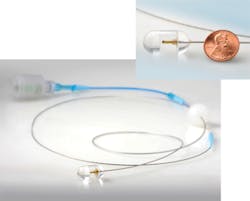
Beyond SPIE BiOS, LFW's sister magazine BioOptics World is also concerned with giving readers the tools to develop better photonic instruments that will eventually have commercial and clinical outcomes. There is a new conference called Strategies in Biophotonics (http://www.strategiesinbiophotonics.com/index.html) to be held in Boston from September 9-11 that is designed to "bring clinical and preclinical system/device developers together with photonics suppliers, applications experts, and those with expertise in business planning/entrepreneurship, regulatory affairs, and finance, to help ensure that biophotonics-based innovations are addressing real needs and can be fully realized as tools for clinicians and researchers." The topic of Translational Research has become such a buzz in the medical community that there is even a Center for Clinical and Translational Sciences at The University of Texas (Houston, TX) that recognizes: "This translation may seem like an automatic part of research and medical practice, but in reality it is a major stumbling block in science, medicine, and public health. This is partly due to the compartmentalization of research training. Basic scientists are not generally trained to think of the clinical application of their work, clinicians are often not taught to formulate research studies based on clinical observations, and public health scientists may not have a strong background in basic or clinical research." The statement is all-too-true, and is part of the reason that laboratory breakthroughs often take years to reach widespread clinical usage. Case in point is a cure for cancer--even Stand Up 2 Cancer (SU2C) has a video from three years ago that talks about the importance of translational research in the overall race for a cancer cure:
http://www.ninds.nih.gov/research/translational/index.htm
National Psoriasis Foundation Translational Grants program:
https://www.psoriasis.org/research/our-research/grants/translational
https://ctsi.mcw.edu/investigator/funding/pilot-grants/
SPORE grants from the National Cancer Institute:
http://www.parkinsons.org.uk/content/translational-research-grants-call-drug-targets
In the late 1980s, the successful translation of laboratory technology to commercial product had a different name: technology transfer. While this term still holds for many industries, here's hoping that the "translational research" buzzword will indeed improve clinical outcomes; sometimes, it's 'what's in a name' that counts.

Gail Overton | Senior Editor (2004-2020)
Gail has more than 30 years of engineering, marketing, product management, and editorial experience in the photonics and optical communications industry. Before joining the staff at Laser Focus World in 2004, she held many product management and product marketing roles in the fiber-optics industry, most notably at Hughes (El Segundo, CA), GTE Labs (Waltham, MA), Corning (Corning, NY), Photon Kinetics (Beaverton, OR), and Newport Corporation (Irvine, CA). During her marketing career, Gail published articles in WDM Solutions and Sensors magazine and traveled internationally to conduct product and sales training. Gail received her BS degree in physics, with an emphasis in optics, from San Diego State University in San Diego, CA in May 1986.
